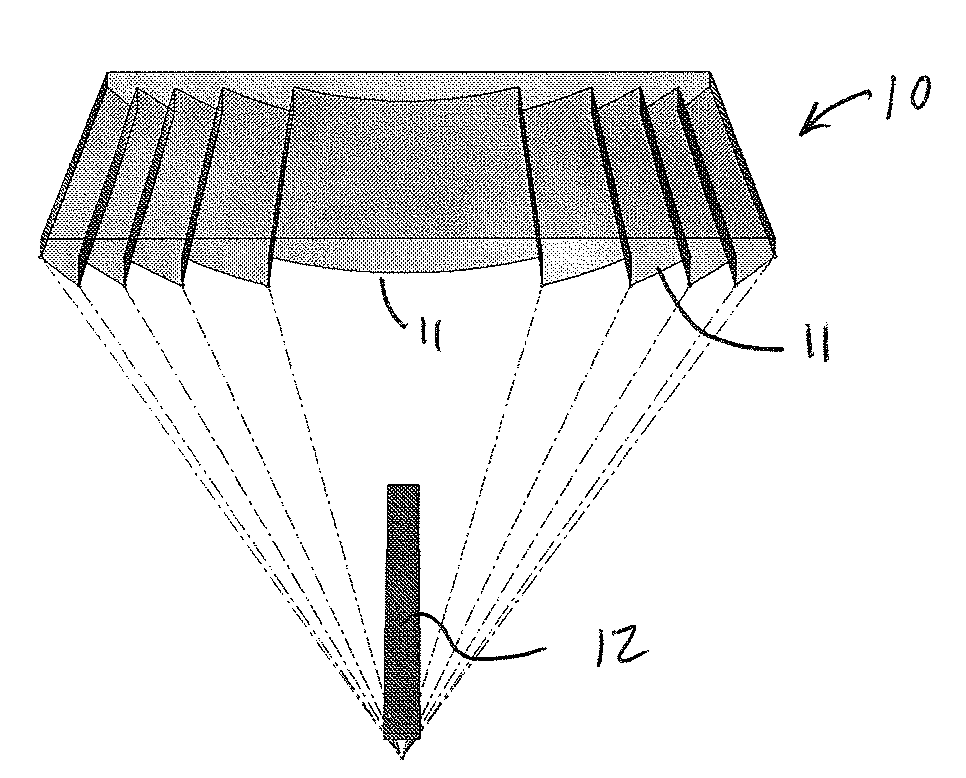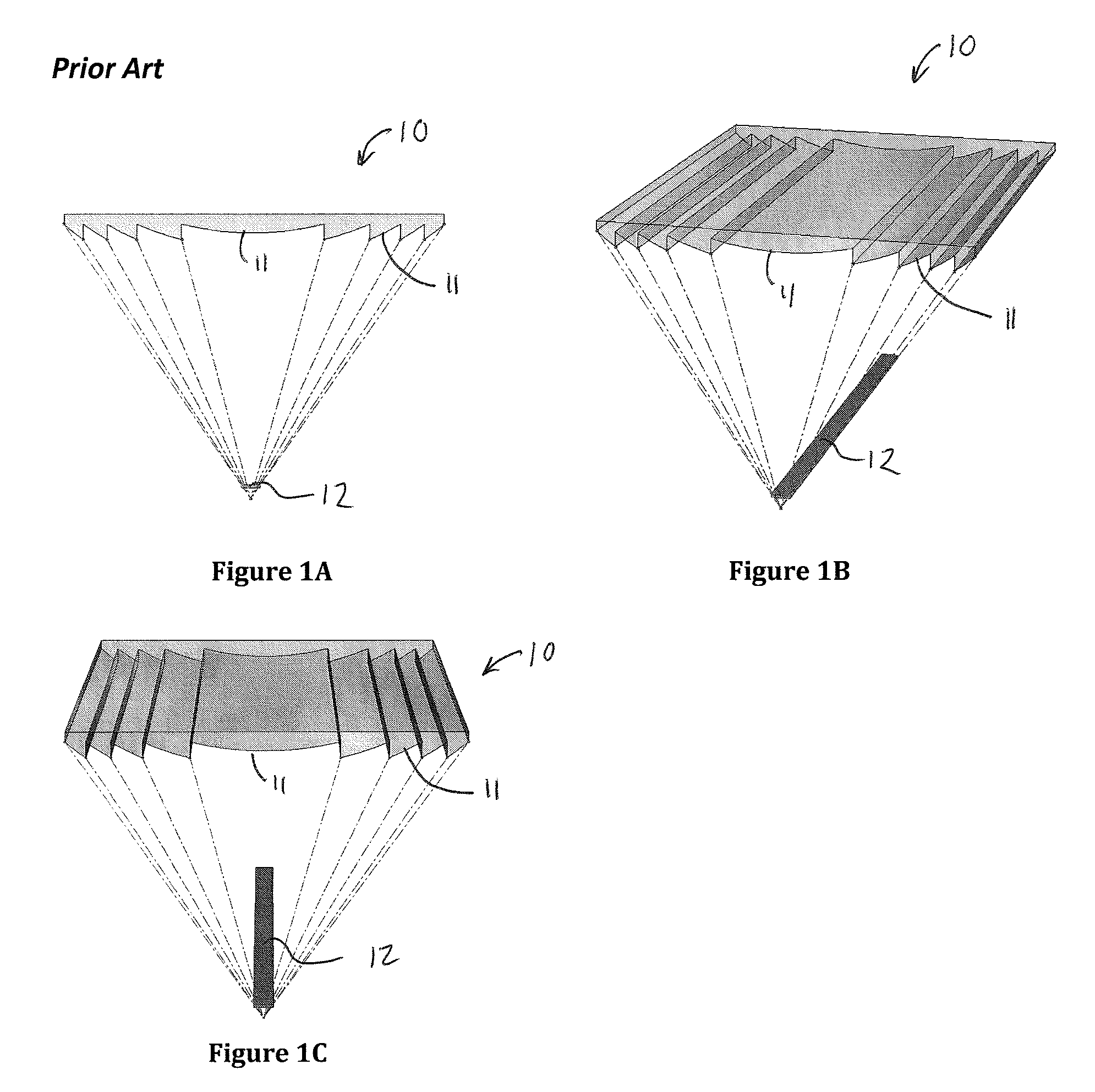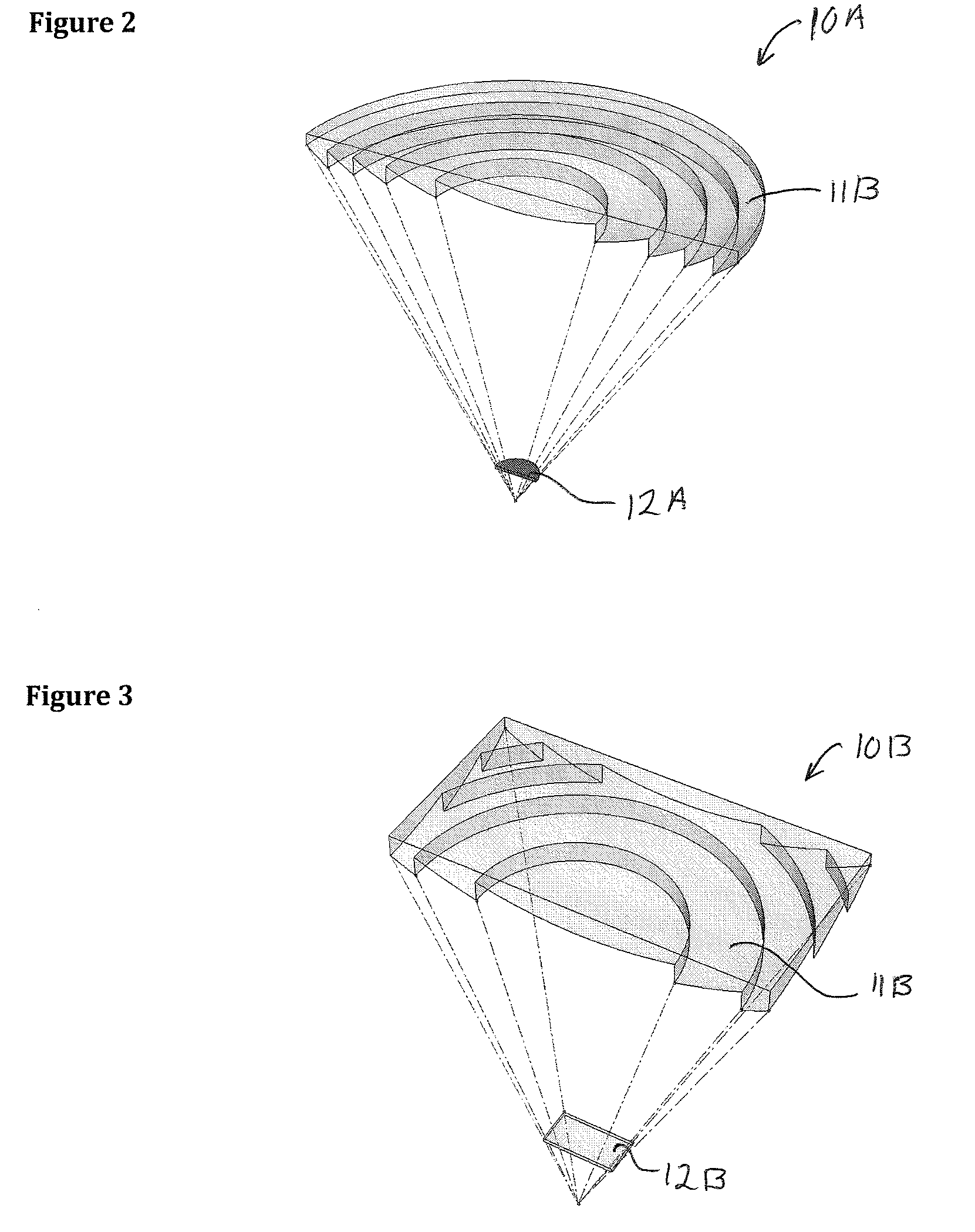Low-profile solar tracking module
- Summary
- Abstract
- Description
- Claims
- Application Information
AI Technical Summary
Benefits of technology
Problems solved by technology
Method used
Image
Examples
Embodiment Construction
[0045]Referring now to FIGS. 1A-1C, a prior art single focal point linear Fresnel lens 10 is shown. The Fresnel lens 10 has a surface consisting of a series of simple lens sections 11 so that a thin lens with a short focal length and large diameters is possible. In the Fresnel lens 10, the surfaces of these lens sections 11 are designed to refract the light by collapsing the surface curvature of a conventional convex lens into a thin planar or curved sheet. As shown in FIG. 1, the surfaces of the prism side of the lens sections 11 approximate the curvature of a spherical or aspherical conventional lens. When looking at the surface geometry of adjacent lens sections 11, the end slope of one lens section 11 and the beginning slope of the next lens section 11 is parallel or nearly parallel.
[0046]Referring to FIG. 2, one embodiment of a prior art Fresnel lens 10A is shown. In this embodiment, the Fresnel lens 10A is a circular, or 3-Dimensional, lens. The Fresnel lens 10A is used for il...
PUM
 Login to View More
Login to View More Abstract
Description
Claims
Application Information
 Login to View More
Login to View More - R&D
- Intellectual Property
- Life Sciences
- Materials
- Tech Scout
- Unparalleled Data Quality
- Higher Quality Content
- 60% Fewer Hallucinations
Browse by: Latest US Patents, China's latest patents, Technical Efficacy Thesaurus, Application Domain, Technology Topic, Popular Technical Reports.
© 2025 PatSnap. All rights reserved.Legal|Privacy policy|Modern Slavery Act Transparency Statement|Sitemap|About US| Contact US: help@patsnap.com



